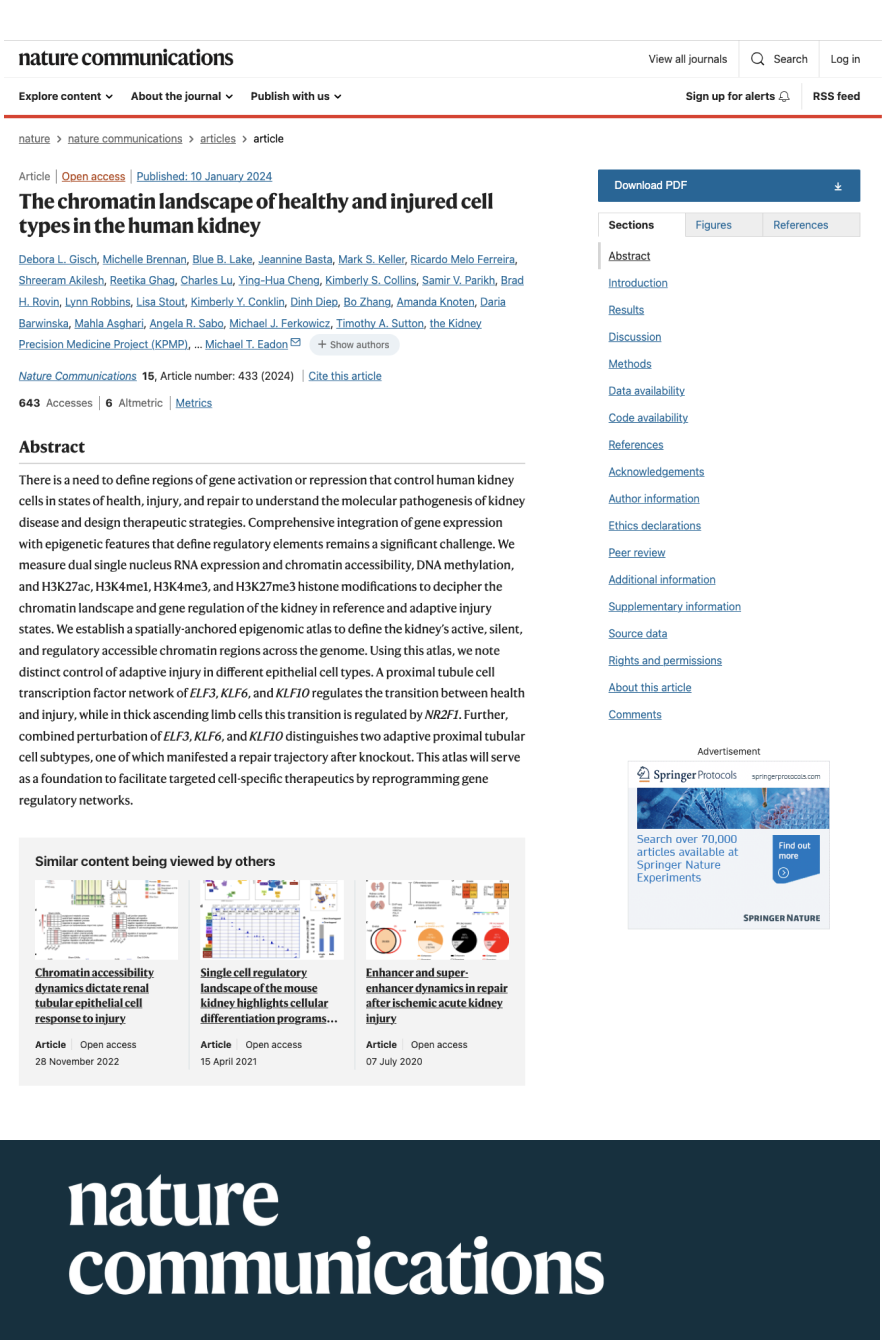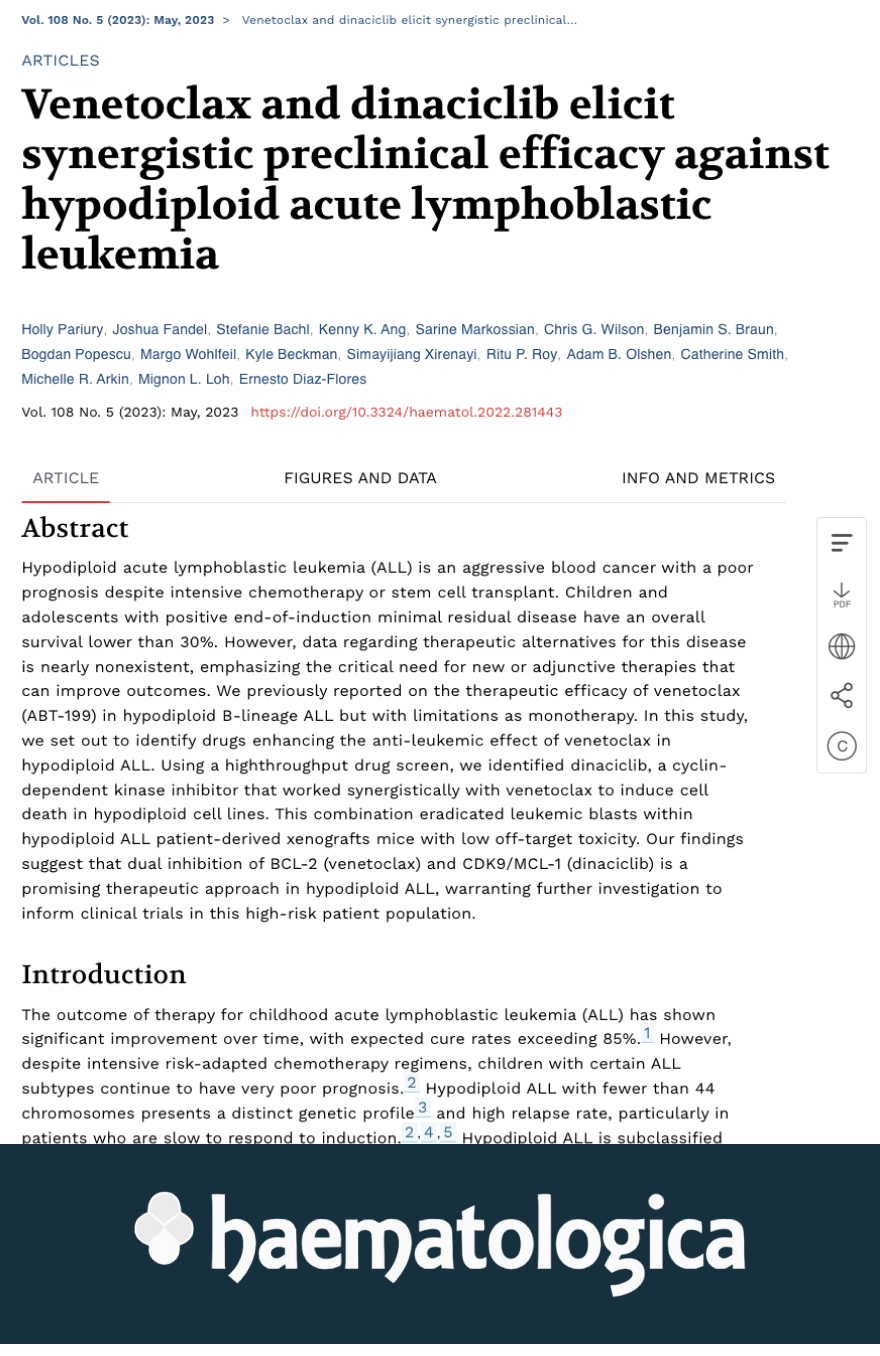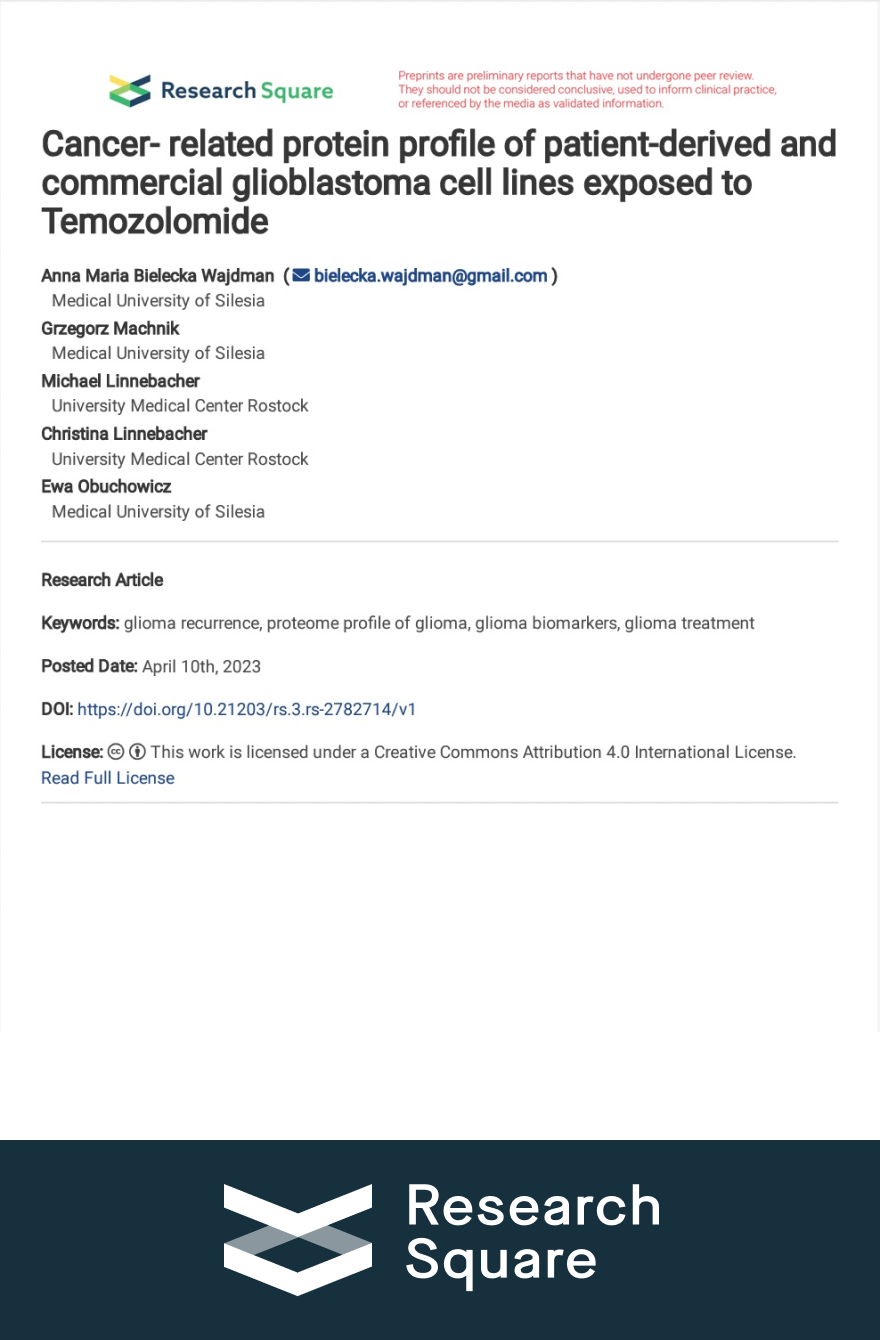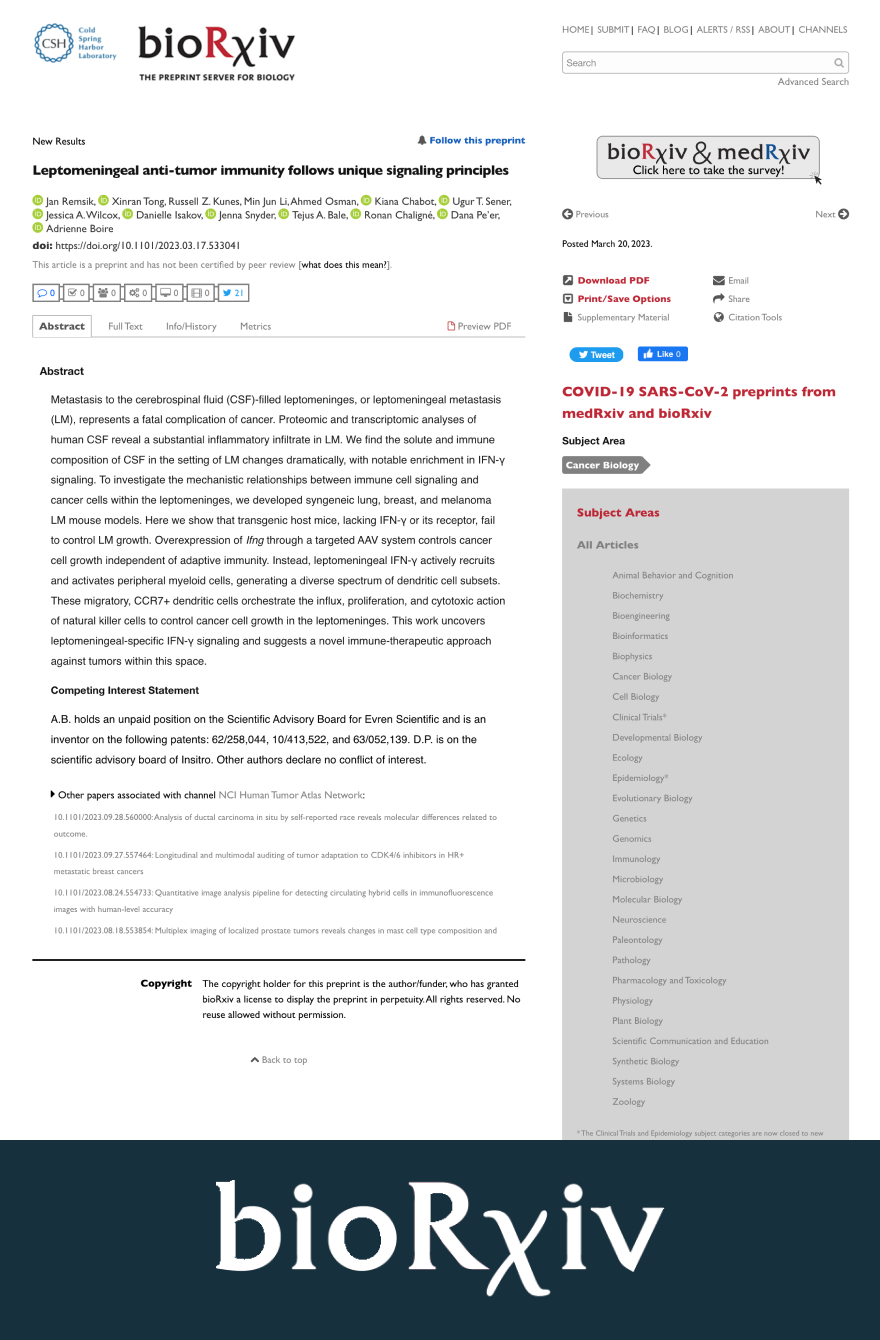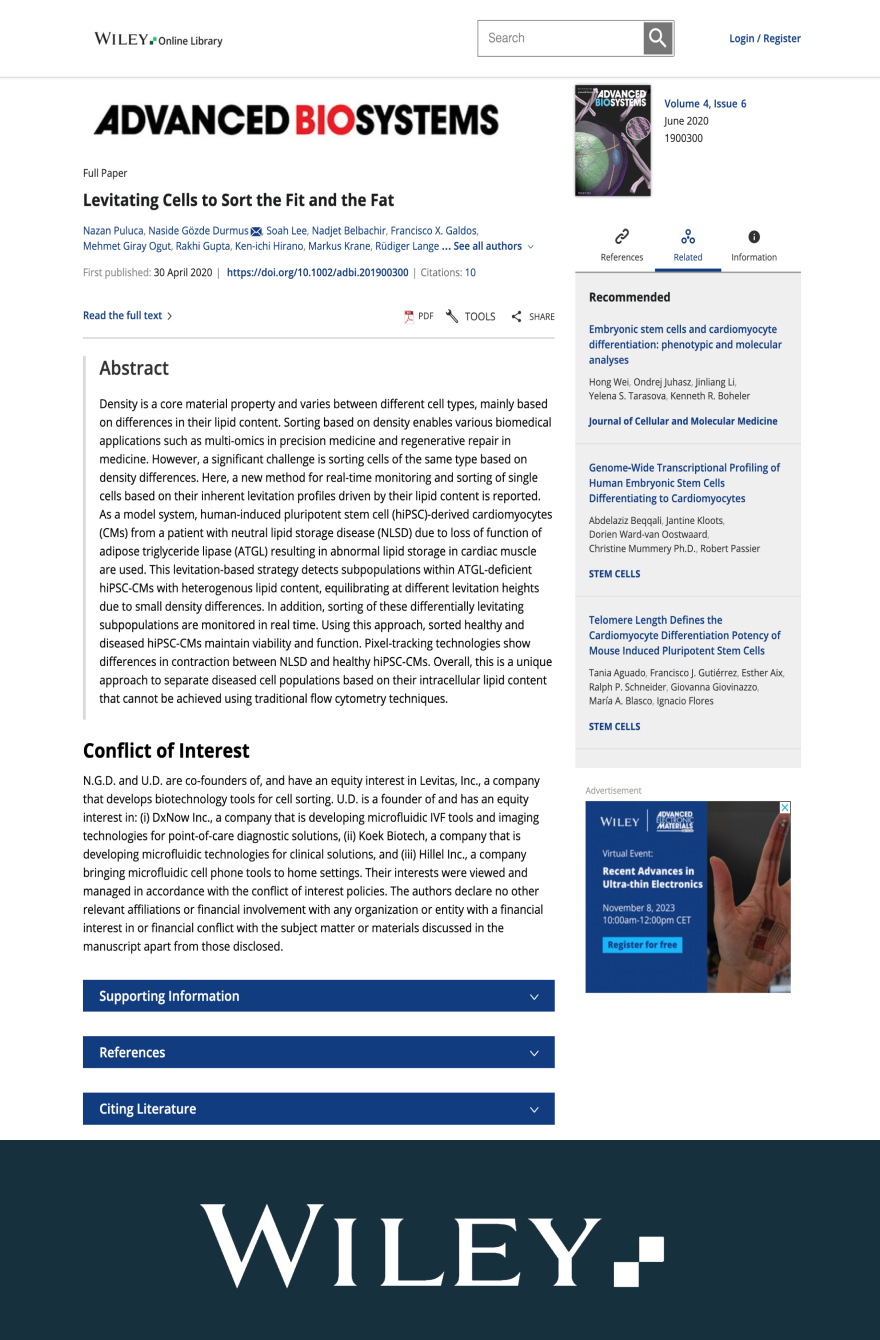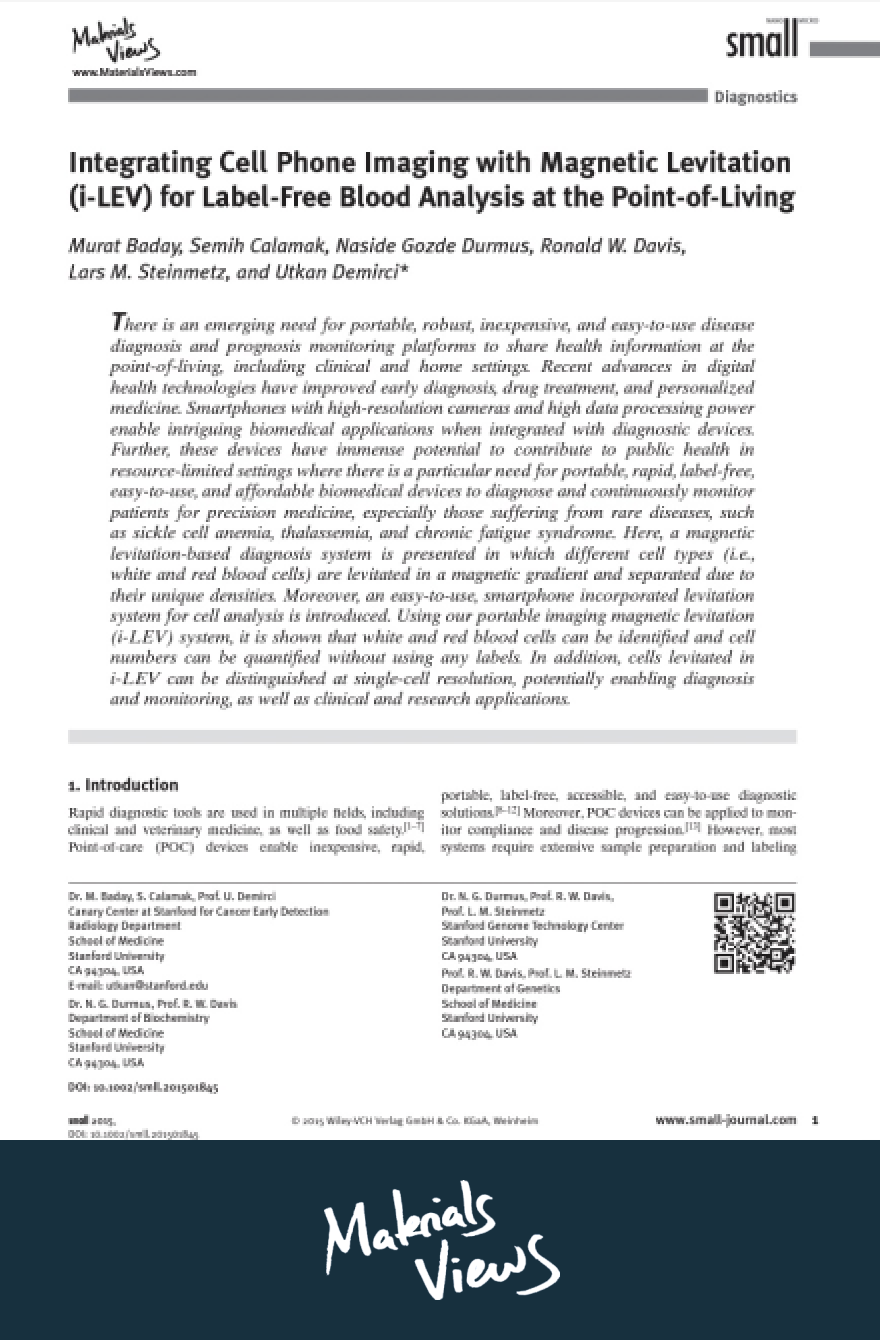- Resources
Publications
Sort by
January 10, 2024
Debora Gisch, PhD, and colleagues pioneered a comprehensive epigenomic atlas of the kidney, shedding light on its cellular response to injury and repair. Utilizing the LeviCell® systems for a select number of samples, they purified nuclei from precious kidney biopsy samples and healthy tissue, ensuring high-quality inputs for subsequent single nuclei RNA-seq and ATAC-seq analyses, elucidating the chromatin landscape in kidney reference and adaptive injury states.
May 17, 2023
Through a high-throughput screen using engineered NALM-16 cells, Holly Pariury, DO, and colleagues discovered that dinaciclib enhances the anti-leukemic effect of venetoclax against hypodiploid Acute Lymphoblastic Leukemia (ALL), an aggressive blood cancer disease with poor prognosis. After lentiviral transduction of the cells, Levitation Technology™ was utilized to improve cell suspension quality by removing dead cells and debris generated from the process. The results obtained offer insights into the CDK9/MCL-1 pathway’s central role in hypodiploid ALL and a promising new treatment approach for this aggressive cancer.
April 10, 2023
Anna Bielecka-Wajdman, PhD, and colleagues investigated proteomic changes in glioblastoma multiforme (GBM) cell lines after Temozolomide (TMZ) treatment. Further, the team used the LeviCell® 1.0 system to efficiently isolate live cells that survived the treatment, enabling the characterization of this TMZ-resistant subpopulation’s morphology and growth by microscopy. The findings provide valuable insights into GBM’s treatment resistance and highlight potential therapeutic avenues.
March 20, 2023
Utilizing the LeviCell® 1.0 system, Jan Remsik, PhD, PharmD, and colleagues successfully refined the proteogenomic analysis of delicate cerebrospinal fluid samples from leptomeningeal metastasis (LM) models via CITE-seq. The breakthrough discovery that dendritic cells, guided by IFN-γ, are central to the innate immune response against leptomeningeal metastasis presents a promising direction for new therapies, highlighting the power of Levitation Technology™ in advancing cancer research.
April 30, 2020
Nazan Puluca, PhD, and colleagues harnessed magnetic levitation to segregate cardiomyocytes (CM) based on intrinsic density variations from lipid content differences. Applied to cell lines derived from samples obtained from human subjects with neutral lipid storage disease, real-time monitoring of the levitation profile allowed detection of distinct subpopulations within the same cell subtype. Microscopy and patch-clamp electrophysiology experiments on sorted cells revealed new insights into lipid accumulation’s impact on CM structure and function.
August 11, 2015
Murat Baday, PhD, and colleagues developed a groundbreaking diagnostic tool for blood analysis that combines the power and ubiquity of smartphones with magnetic levitation-based label-free separation of red and white blood cells for quantification through cell phone imaging. The underlying technology has been developed into the LeviCell® systems for gentle viable cell enrichment for sample quality improvement, while preserving cell native states.

